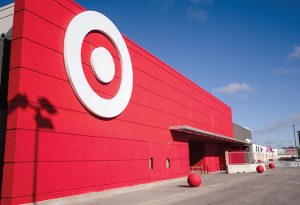Earnings hit by higher costs, inventory glut
MINNEAPOLIS — Target Corp. today said its second-quarter profit fell nearly 90% from the year-ago level as it slashed prices to unload excess inventory. But after absorbing the short-term pain, the retailer is now set for a rebound that would put it on track to hit its revised full-year financial targets.
“Looking ahead, the team is energized and ready to serve our guests in the back half of the year, with a safe, clean, uncluttered shopping experience, compelling value across every category, and a fresh assortment to serve our guests’ wants and needs,” said CEO Brian Cornell.
 Comparable sales increased 2.6% in the second quarter as the company gained unit share in each of its five core merchandising categories, most notably food and beverage, beauty and household essentials.
Comparable sales increased 2.6% in the second quarter as the company gained unit share in each of its five core merchandising categories, most notably food and beverage, beauty and household essentials.
Target said comparable-store sales have now increased for 21 consecutive quarters. Second-quarter store comps were up 1.3% and digital comps increased 9%.
Traffic at Target’s stores and on its website increased 2.7% year over year, cited by Target as a sign that shoppers still have spending power and will help the company meet its target for full-year revenue growth in the low to mid-single digits.
After posting an operating margin rate of 1.2% in the second quarter, Target expects an operating margin rate of around 6% in the year’s second half.
Same-day services (Order Pickup, Drive Up and Shipt) grew nearly 11%, led by Drive Up. More than 95% of sales in the quarter were fulfilled by Target stores.
Total revenue in the second quarter was $26.04 billion, a 3.4% increase driven in part by higher prices due to inflation.
Net income declined to $183 million, or 39 cents per share, from $1.82 billion, or $3.65 per share, a year earlier. Profits were squeezed by markdowns on the inventory glut as well as higher transportation costs, including the addition of workers at distribution centers to handle the glut.
“If we hadn’t dealt with our excess inventory head on, we could have avoided some short-term pain on the profit line, but that would have hampered our longer-term potential,” Michael Fiddelke, Target’s chief financial officer, said on an earnings call.




You must be logged in to post a comment Login